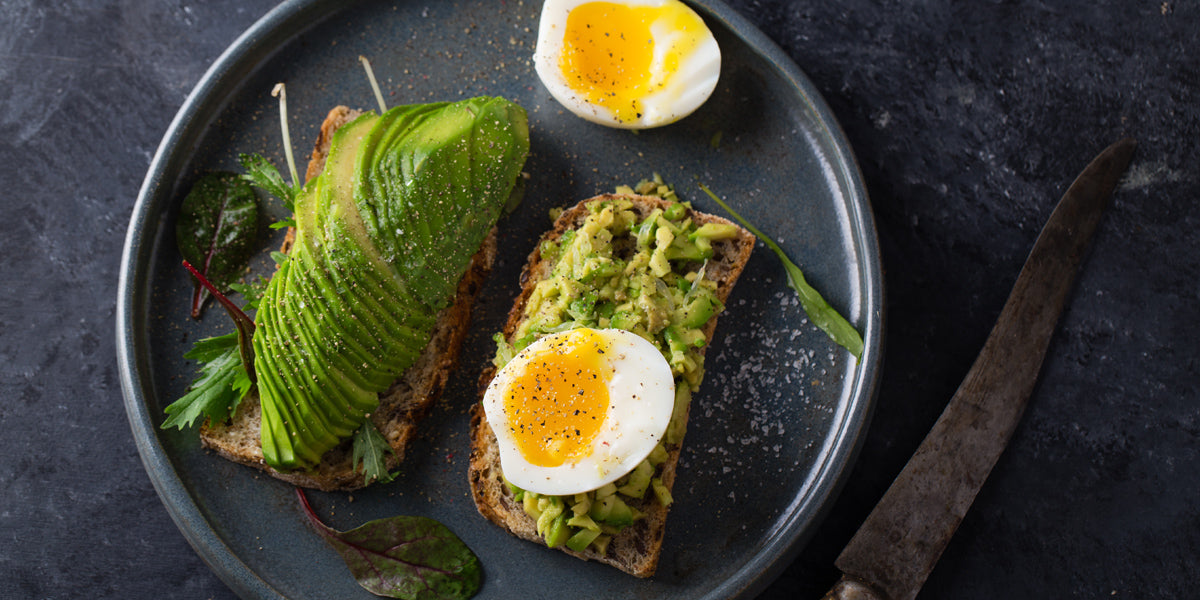6 Swaps For A Healthier Pantry
To put it simply: We eat what is within reach. So when your pantry is boasting best-for-you options, it’s easier to get the nutrients your body needs every day.
But too often, our pantries can be a catch-all for detrimental trans fats, highly processed junk, added sugars, and excess sodium. Little amounts of these additives pile up over time, leading to increased inflammation, unwanted weight gain, and uninspired meals.
Start by tackling the “low-hanging fruit” of your pantry. That is, the healthy swaps that will provide the most nutrition bang for your buck. As your budget allows, make the following six pantry upgrades over time so you can be healthfully confident every time you open your pantry doors.

6 pantry swaps for better health
You don’t need to makeover your entire pantry to make a significant impact on your health. The following commonly consumed items are a great place to start your clean sweep.
1. Swap Out: Inflammatory Oils.
Oils that are chemically extracted and have a high ratio of polyunsaturated omega-6 fatty acids are connected to chronic inflammation, which can lead to increased heart disease and other health problems over time. Avoid generic vegetable oils, vegetable oil blends, corn oil, soybean oil, grapeseed oil, safflower oil, sunflower oil, hemp oil, walnut oil, and cottonseed oils.
>> Swap In: Healthy Oils.
2. Swap Out: Clunky Condiments.
Condiments like salad dressings and BBQ sauce are often cited as “sneaky” sources of unwanted ingredients like added sugars and too much salt. Well the secret is out of the pantry! In fact, some sauces and dressings may contain more sugar per 2 tablespoons than a handful of Oreos!
>> Swap In: Cleaner Condiments.
3. Swap Out: Sugar Cereals.
It can be convenient to start your day with a bowl of ready-to-pour cereal, but this category is where a lot of added sugar and processed grains can enter your day from the start. Classic choices like Cap’n Crunch, Frosted Flakes, and Lucky Charms can pack more than a tablespoon of sugar in just 1 cup. Not to worry, there are better choices.
>> Swap In: Cereal Stars.
4. Swap Out: Sugary Pasta Sauce.
Opening a jar of pasta sauce or marinara sauce is a great way to add more heart-healthy tomatoes and delicious flavor to your meal. But if you’re not savvy, a single ½-cup serving of the red sauce could have up to a tablespoon of added sugar. That can be frustrating, especially since it doesn’t even need to be in there.
>> Swap In: Best-for-You Pasta Sauce.
Good thing you can get your hands on amazing tasting pasta sauce that contains zero grams of added sugars. In Otamot sauces, all the sweetness and well-rounded flavor you need comes from nutrient-dense vegetables like sweet potatoes, carrot, butternut squash, and sweet onion.

5. Swap Out: High-Glycemic Grains.
Eating an excess of breads, pasta, crackers, and other products made from high-glycemic grains (ie: white flour, white rice, and instant hot cereals) has been connected to increase cholesterol, heart disease, chronic inflammation, and type 2 diabetes.
>> Swap In: Whole Grains.
For better long-term health, choose breads, pasta, and cereals that are based on lentils, beans, or whole-grains, as well as low-glycemic grains like quinoa, barley, and buckwheat.
6. Swap Out: Sneaky Sweet Snacks.
Packaged sweet snacks can be a triple whammy against health since they often contain trans fats (from partially hydrogenated oil), added sugars, and highly processed flours with little to no nutritional value. Things like packaged cookies and bars, baking mixes and frostings, and some microwave popcorns may be the unhealthiest items lurking in your pantry.
>> Swap In: Sweet-for-You Snacks.
When a sweet craving hits, arm your pantry with items that will provide a sweet taste as well as some nutritional value. Items such as dehydrated fruit pieces, protein bars sweetened with dates and other whole foods, coconut chips, sweet crunchy chickpeas, or lightly sweetened air-popped popcorn are good choices to keep on hand.
When you take stock of what is within reach and add better options, you can make your pantry work for you. Start by tackling these categories one at a time so your pantry can be your best built-in health ally.

Jessie Shafer is a registered dietitian-nutritionist, team member at The Real Food Dietitians, former magazine editor, and busy mom of two who loves to make a good meal from the pantry.
Also in Health Tips

Truths and Myths about Mindful Eating

10 Food Pairs That Are Better Together



